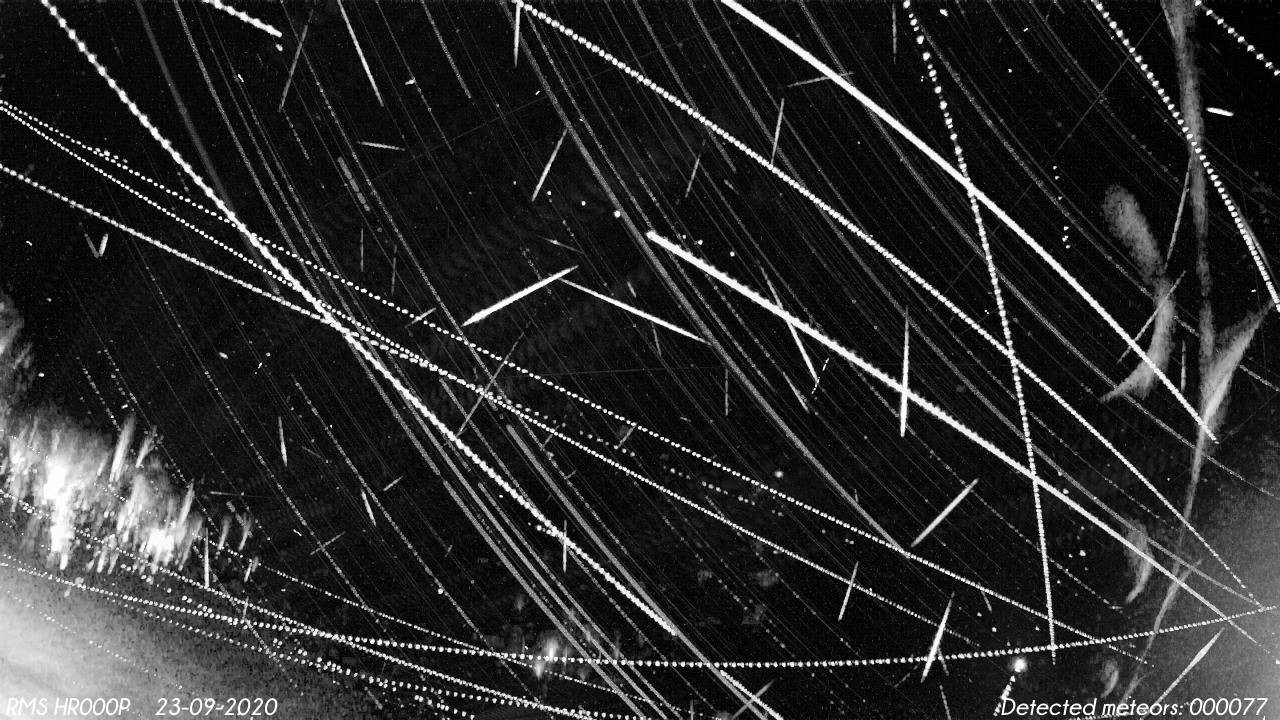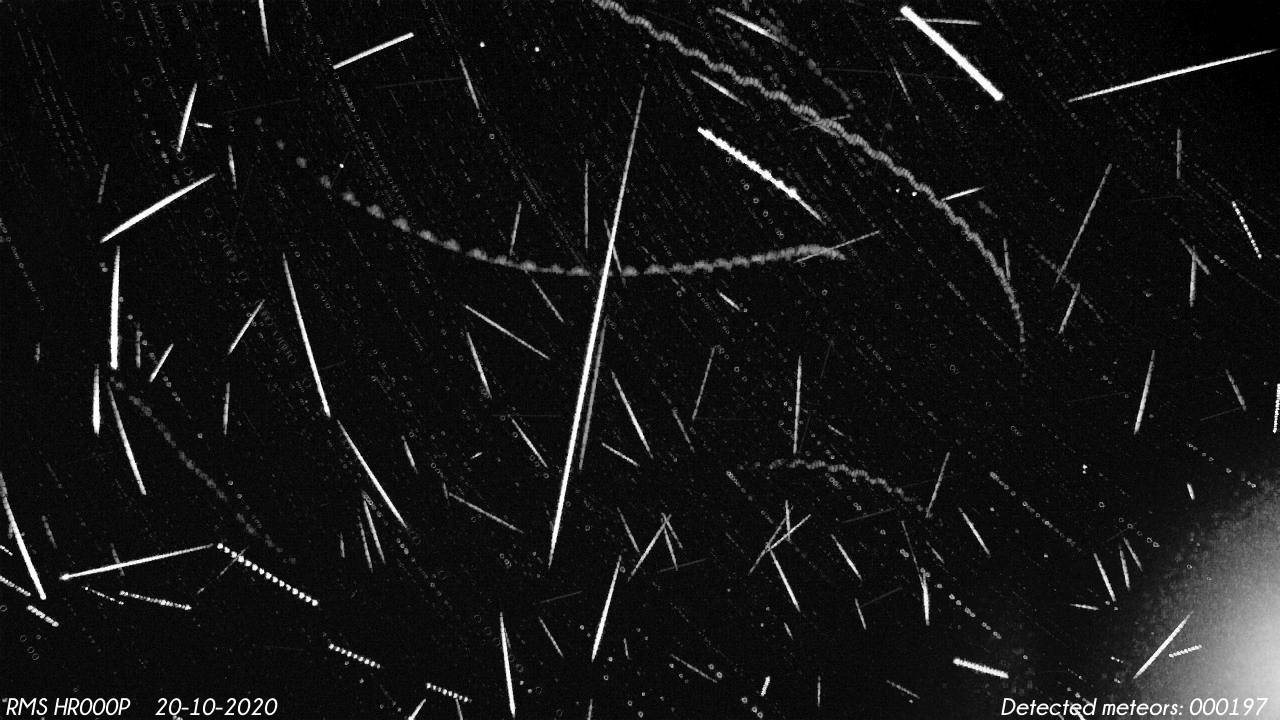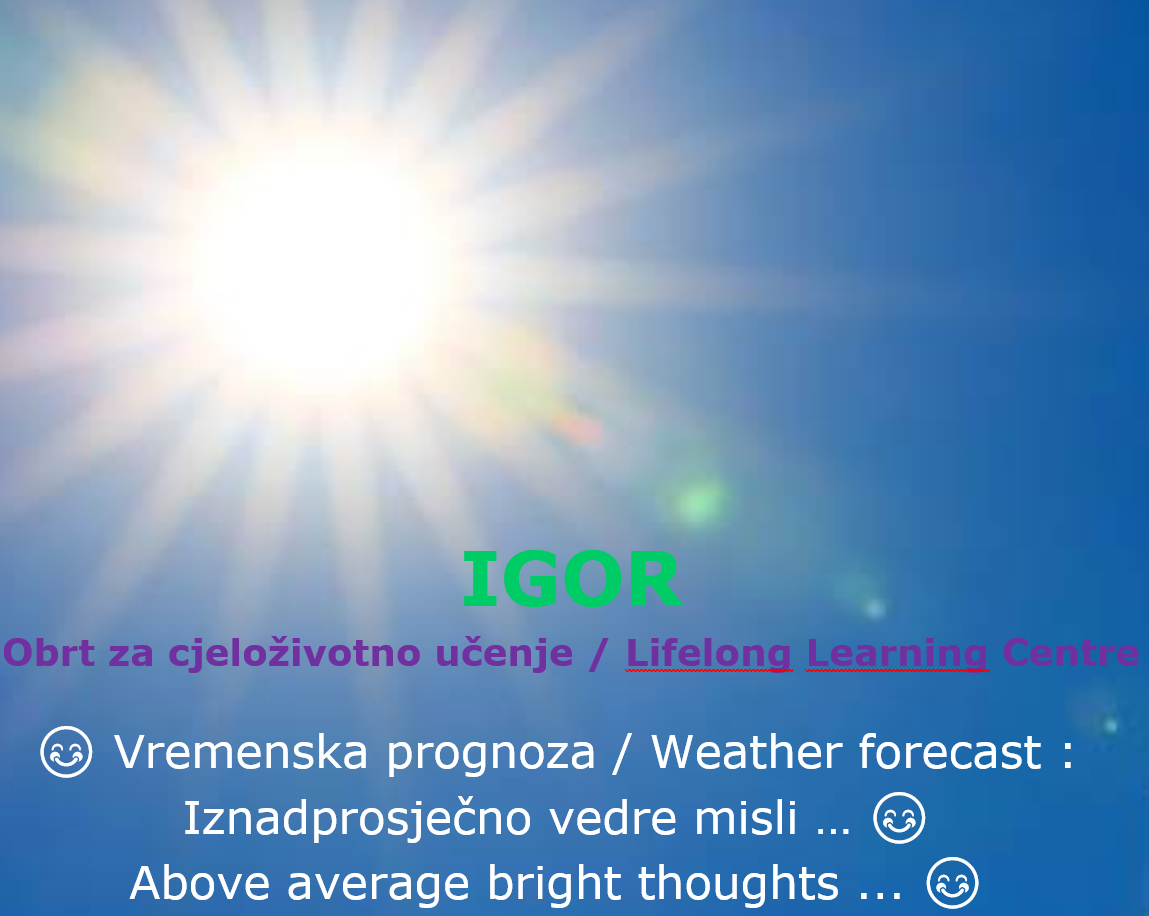Global meteor network camera at our location.
For several years we are hosting a camera pointed westwards at the night sky. The camera is a rather special type, a rather sensitive camera for observing meteors, as part of Global meteor network. We have it as part of our curiosity and part of will to help others increase the knowledge of the world around us. Well, not only the world but space also, as meteors are remnants of the formation of our Solar system, traveling back to Earth. In doing so, meteors, being small pieces of dust or larger rocks, usually burn in the atmosphere, and leave a bright trail in night sky. Scientists gather the images, and analyze them. From several images one can calculate trajectory, speed, their size and mass. Sometimes people can go and hunt for the remnants of the meteors, but that is a bit rare. However, any large flat surface will collect some space dust, among much more common dust from Earth.
A nice, detailed explanation how does Global Meteor Network makes all those images and what science can be devised can be found in a paper on MNARS page. In that paper Vida D et al. presented a 2020 January 9 meteorite dropping fireball in Croatia, where the data from our camera was used!.
Moreover, one can capture vary nice images of the Sprites happening over the Istra, Croatia. Check this out!

See this in lower left corner? That is Sprite. Once it was believed that they are very rare, just because they were discovered by NASA when photographing the storm clouds from above, and that with very sensitive cameras. Luckily, due to the curvature of earth, and being sensitive, our camera can capture the sprites above the clouds in westward direction. At the same time, Blitzortung.org captured many strikes around Istra and Kvarner region of Croatia.

The main operational goal of the project GLOBAL METEOR NETWORK it to establish a decentralized science-grade instrument which observes the night sky every night of the year from as many locations around the world as possible.
The science goals of the project are the following:
- Providing the meteor community with near real-time awareness of near Earth meteoroid environment by publishing orbits of all observed meteors from all around the globe every morning.
- Observing meteor showers, computing their flux, mass indices and orbits to constrain meteor shower prediction models.
- Observing meteorite producing fireballs to increase the number of meteorites with know orbits (only ~35 at the end of 2018, more info: http://www.meteoriteorbits.info/) and help constrain meteorite source regions.
Source: GLOBAL METEOR NETWORK

More about the meteor camera at the link The Global Meteor Network – Methodology and first results.
View the embedded image gallery online at:
https://igor.hr/en/research-and-development/meteor-camera#sigProId0c5d0f7de2




